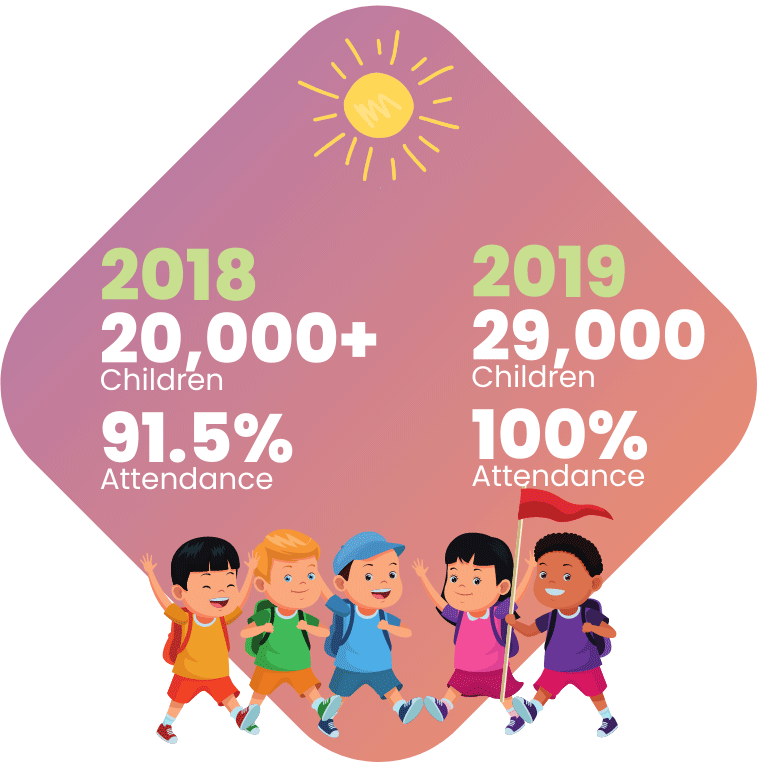While Summer Learning Camps serve multiple ends, they primarily have the following objectives:
Summer camps are organized for 40 days in government school premises during summer vacations. A trained volunteer or Aspire teacher leads classes for 3 hours everyday, usually 7 am to 10 am. Children from multiple grades sit together in one class, where they are engaged together or distinctly by the instructor as she sees fit, depending on the lesson plan. The TLM includes wide-array of activities like reading and comprehension, public speaking skills, balgeet, debate competitions, water management, health awareness, discussion on UN’s Sustainable Development Goals, matrakhadi, arithmetic skills, language skills etc.
Parents frequently visit summer camp sites and interact with the class, and occasionally participate in activities. They see how their children take interest in the activities and subjects, enjoy themselves, and acquire different tastes and skills. This goes a long way in reinforcing the value attributed to elementary education in the community, and helps in expediting the eradication of child labour, combating inconsistency of attendance in schools, reducing dropout rates, and boosting the gross enrolment ratio.
Community members also become part of the process and engage with children on socially relevant issues like child labour, child marriage etc. The use of school premises requires approval of district education officials, and this demand is raised by the School Management Committees (SMCs) on behalf of the children. For many schools, the summer camp mobilization is often the first step taken by the SMC towards their revitalization. Panchayati Raj institutions are also engaged in the process, as the children attendees of summer camps are tallied with the village education registers maintained by the gram panchayats with Aspire’s help. This exercise prepares panchayats officials for the long-term commitment of upholding child rights in their jurisdiction.
More than 20,000 children from grades 1 to 5 were part of the summer learning camps in 2018, with 91.5% attendance of children in 6 Odisha blocks (Danagadi, Harichandpur, Joda, Koira, Kutra, and Sukinda) and 2 Jharkhand blocks (Jagannathpur and Naomundi). The 2019 summer camp saw an unprecedented participation by 29,000 children, with attendance rates as high as 100% during the 40 days.
Around 900 youth volunteers and Aspire staff helped in running 950 summer camp classes. More than 750 School Management Committees mobilized resources and obtained permits from the district officials for hosting the summer learning classes in school premises. Seeing the engagement of children, community members raised demand for extension of summer schools to all elementary schools and classes in the region.
Since the pandemic, summer learning camps have been temporarily closed.
In 2019, 60% government schools hosted summer learning camps. Out of 32,240 eligible children (grades 3, 4, and 5) in these 8 blocks, 29,501 (91.5%) participated.
The figure below gives the baseline and endline assessment for 22,679 summer camp participants from May-June 2019. 44% of children scored less than 30% in math at the beginning of the summer camp. By the end, only 10% remained in the bottom 30%. In language, children scoring above first division increased from 25% to 68%.
Impact assessment of the 2019 summer camp

